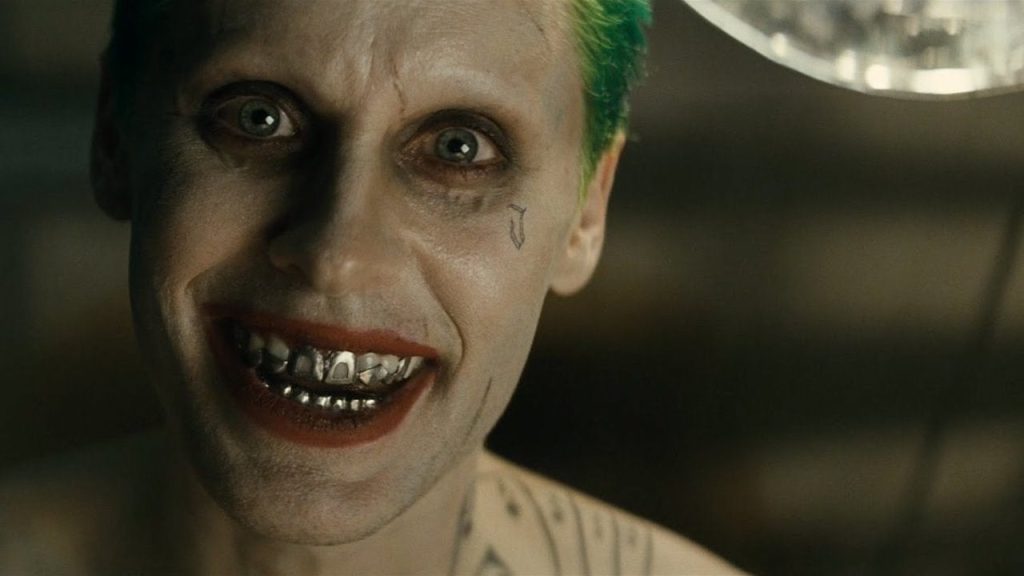Unveiling Suicide Squad Director’s Vision: The Joker’s ‘Original Intent’ Included an Enigmatic Heap of Purple Skulls
11/08/2023 toolmxh.com

#reviewgame #iggamesreviews #TopReviewGame #toolmxh
- Full link here: https://toolmxh.com/unveiling-suicide-squad-directors-vision-the-jokers-original-intent-included-an-enigmatic-heap-of-purple-skulls/
- Subcribe me update video daily: https://bit.ly/IGGGamesReviews
- Subcribe me Dailymotion update video daily: https://www.dailymotion.com/igggamesreviews
Suicide Squad, directed by David Ayer, made a big influence on the superhero movie style with its unorthodox strategy and outlandish characters. Amongst them, the Joker, portrayed by Jared Leto, grew to become a focus of discussions and debates. Not too long ago, Ayer has make clear the ‘unique intent’ he had for the Joker, disclosing an enchanting concept involving a towering assemblage of purple skulls. On this article, we delve into Ayer’s creative idea and study the potential implications it may have had on the movie’s narrative.
1. Ayer’s Artistic Imaginative and prescient:
David Ayer is famend for his skill to craft gritty and intense movies, typically exploring the psyche of complicated characters. With Suicide Squad, his ambition was to reimagine the Joker as an agent of chaos, offering a recent tackle this iconic villain. Ayer envisioned a scene that includes a colossal pile of purple skulls, which might function a symbolic illustration of the Joker’s insanity and penchant for destruction.
2. Symbolism and the Joker’s Id:
Purple, typically related to thriller and royalty, held vital symbolism inside Ayer’s imaginative and prescient. The colour selection sought to spotlight the enigma surrounding the Joker’s true identification and origin. Furthermore, the stacks of skulls embodied the chaotic and unpredictable nature of the character, mirroring his manipulation and disrespect for human life.
3. Psychological Affect on Characters:
Ayer’s intention for the scene that includes the huge heap of purple skulls was not solely aesthetic. The director aimed to discover the psychological influence this haunting picture would have on the opposite characters within the movie, particularly the members of the Suicide Squad. The towering show of skulls would function a chilling reminder of the Joker’s cruelty and the threats they confronted, additional intensifying the emotional turmoil skilled by the squad all through their mission.
4. Lacking Items: Joker’s Backstory:
Some of the contentious points of Suicide Squad was the restricted display screen time that the Joker acquired. Ayer’s unique intent, as exemplified by his imaginative and prescient of the purple skulls, additional hints at the potential of exploring the Joker’s backstory and motivations. Such a visible aspect would have bolstered the notion that the Joker’s deranged existence was marked by loss, ache, and a twisted admiration for chaos, propelling the character’s depth past his flamboyant look.
5. The Difficulty of Enhancing:
Sadly, Ayer’s grand imaginative and prescient for the Joker, together with the enduring pile of purple skulls, didn’t totally come to fruition on-screen. Varied elements, together with studio interference and the modifying course of, considerably altered Ayer’s supposed narrative. In consequence, the character of the Joker was considerably diminished, leaving the viewers with a fragmented portrayal. The absence of the purple skulls left followers craving for a deeper exploration of the character’s psyche and a larger glimpse into his relationship with the Suicide Squad.
Conclusion:
David Ayer’s want to current a recent, enigmatic tackle the Joker inside Suicide Squad is clear via his ‘unique intent’ of that includes a colossal pile of purple skulls. Although this imaginative and prescient was not totally realized within the remaining reduce of the movie, it gives a tantalizing glimpse into the extent of depth Ayer supposed for the character. The absence of the purple skulls and the next discount of the Joker’s display screen time left followers interested by what may have been—an enhanced understanding of the character’s motivations, the exploration of his backstory, and a heightened psychological influence on the movie’s narrative. In the end, the Joker’s iconic character and the potential of Ayer’s imaginative and prescient proceed to captivate audiences, reinforcing the function of the notorious villain as a central determine throughout the DC cinematic universe.
Comments (0) for Unveiling Suicide Squad Director’s Vision: The Joker’s ‘Original Intent’ Included an Enigmatic Heap of Purple Skulls